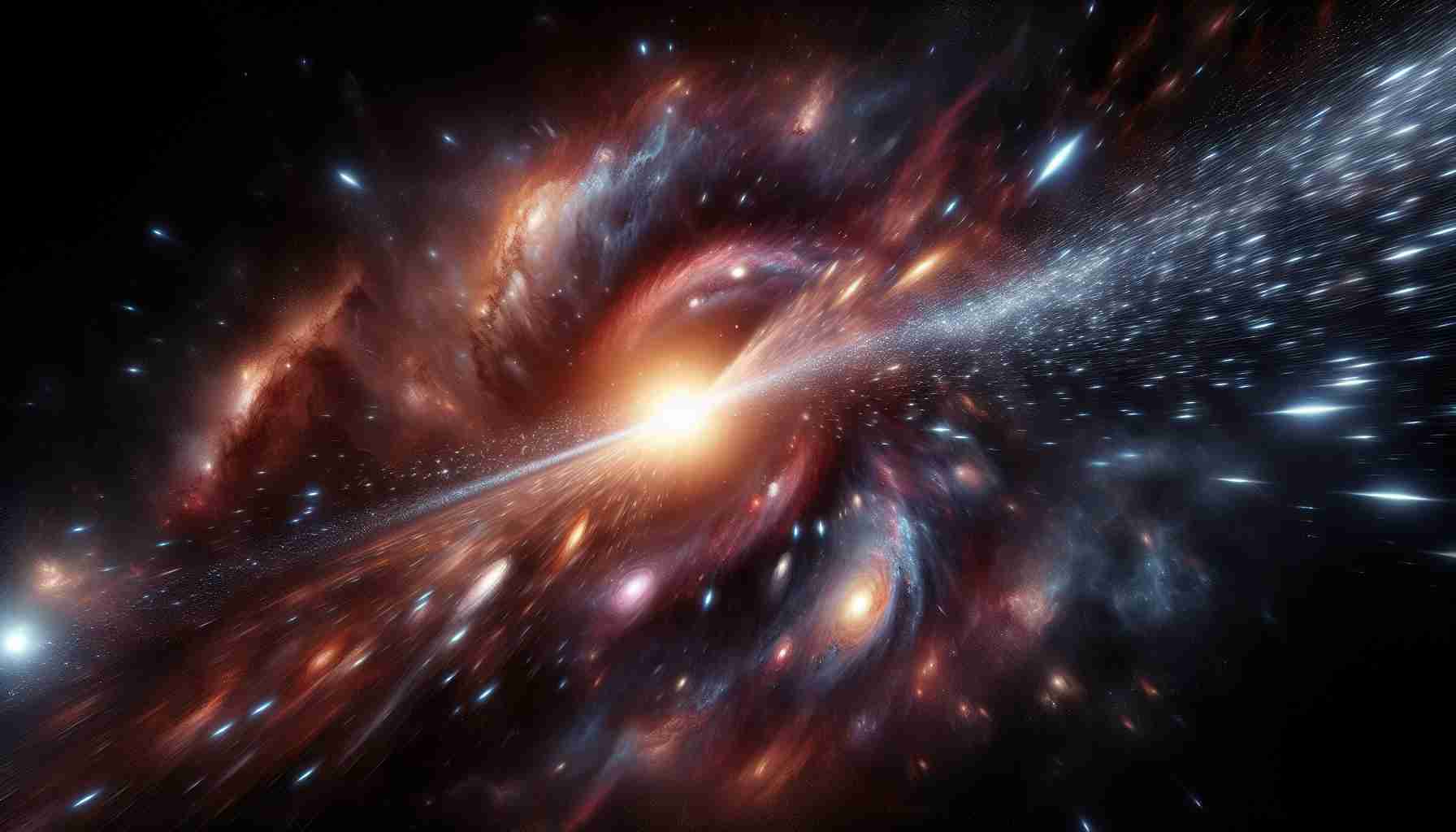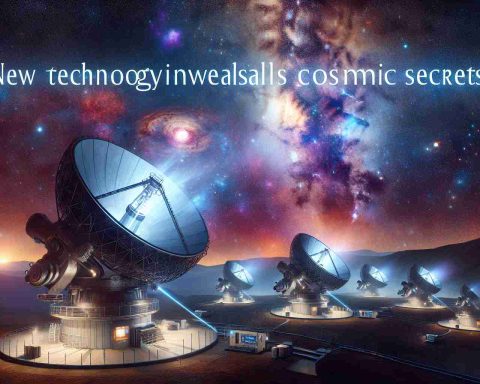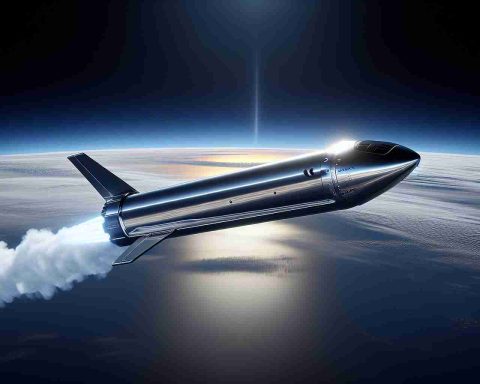The Mysteries of Cosmic Expansion
Recent scientific investigations reveal that the universe is expanding at an alarming pace, outstripping the current understanding of physics. This revelation stems from meticulous observations of a galaxy cluster located over 300 million light-years away, raising critical questions amongst astronomers.
For nearly a century, scientists have observed a vast universe of galaxies drifting on an ever-expanding cosmic sea. Despite theories involving inflationary quantum fields and a mysterious repulsive energy dubbed ‘dark energy,’ the precise mechanics remain elusive. Until now, these theories molded a model of an expanding cosmos populated with visible and invisible matter.
However, discrepancies in measuring the Hubble constant—the rate of cosmic expansion—have led to significant confusion. Different methods yield conflicting results, indicating a troubling ‘tension’ within cosmological measurements. Renowned physicist Dan Scolnic and his team undertook the challenge of refining measurements of the Coma cluster, a dense collection of galaxies.
By analyzing spectral data from nearby supernovae, they determined the Coma cluster’s distance at 321 million light-years. This confirmed a local expansion rate of 76.5 kilometers per second per megaparsec—starkly contrasting with earlier estimates derived from ancient cosmic light, which suggested a lower figure of 67.4 kilometers per second per megaparsec.
This growing divide underscores an urgent need for advanced research to either clarify these inconsistencies or potentially unveil groundbreaking new physics, stimulating excitement and intrigue in the field of cosmology.
Beyond the Stars: The Implications of Cosmic Expansion
The acceleration of the universe’s expansion is not just an ephemeral scientific curiosity; it holds profound implications for our understanding of reality and our place within it. As scientists grapple with the complexities surrounding dark energy and the Hubble constant, society must contend with the philosophical and cultural reverberations of these discoveries. The fundamental questions about the universe’s longevity and destiny challenge long-held beliefs, reshaping our narrative in a cosmos that is both beguiling and unfathomable.
Economically, advancements in cosmological research could spur innovation in technology and materials science. Witnessing how scientific breakthroughs in understanding dark energy and cosmic expansion lead to the development of new technologies could revitalize entire industries. Governments may reinvest in space exploration initiatives, thus fostering a new era of economic opportunity centered around scientific discovery.
Moreover, the potential environmental effects of space research cannot be overlooked. Investigations into cosmic phenomena could prompt sustainability efforts here on Earth, especially if solutions to energy production and efficiency arise from our quest to understand dark energy.
Looking toward the future, the resolution of current cosmological tensions could lead to insights that redefine our understanding of physics and technology, reshaping the scientific paradigm. The stakes are high, as the pursuit of knowledge about cosmic expansion could illuminate the very fabric of existence, impacting not just the scientific community, but humanity at large.
Unraveling the Cosmic Expansion: New Insights and Future Directions
The Mysteries of Cosmic Expansion
The universe’s accelerating expansion continues to captivate scientists, posing fundamental questions that challenge our current understanding of physics. Recent investigations into cosmic phenomena have unveiled crucial details that could reshape our comprehension of the cosmos.
Understanding Cosmic Expansion
The concept of cosmic expansion fundamentally changed the landscape of astrophysics. For nearly a century, evidence has mounted that galaxies are receding from us, akin to dots on the surface of a balloon expanding. However, the precise rate of expansion, encapsulated in the Hubble constant, remains contentious.
Measuring the Hubble Constant: Challenges and Controversies
The Hubble constant, which quantifies the rate of expansion of the universe, has been subject to significant debate. Recent studies suggest a tension between different measurement techniques. For instance, local measurements derived from supernova observations indicate a higher expansion rate compared to estimates based on the cosmic microwave background (CMB) radiation. This discrepancy has provoked theories proposing the existence of new physics beyond the Standard Model.
Innovative Techniques in Cosmic Measurement
One of the innovative approaches to measure cosmic distances involves analyzing spectral data from Type Ia supernovae, which are used as standard candles for measuring astronomical distances. This method was used by physicist Dan Scolnic and his team to re-evaluate the Coma cluster—detected at 321 million light-years away—yielding a local expansion rate significantly higher than previously calculated.
Pros and Cons of Current Scientific Models
Pros:
– Advances in observational technology allow for more accurate measurements of cosmic structures.
– New theoretical models are emerging that could explain discrepancies in the Hubble constant.
Cons:
– Conflicting results create ambiguity in our understanding of fundamental cosmological parameters.
– Current theoretical frameworks struggle to accommodate new data, spurring debates among researchers.
Future Trends and Predictions
As scientists refine their techniques and technologies, we can expect a new wave of discoveries in cosmology. High-resolution imaging and gravitational wave observations are expected to offer deeper insights into cosmic expansion. Additionally, the role of dark energy and its variations across time and space is predicted to be a significant focus of future research.
The Impact of Cosmic Expansion on Modern Physics
The implications of accurately understanding cosmic expansion could be profound, potentially leading to a paradigm shift in cosmology. Discovering new particle physics related to dark energy might unlock answers to longstanding questions and inspire new theories of the universe’s structure and fate.
Conclusion
The exploration of cosmic expansion highlights a thrilling frontier in astrophysics. As researchers delve deeper into the mysteries of the universe, they inch closer to answering fundamental questions that have lingered for centuries. The quest for clarity not only enriches our knowledge but also ignites curiosity within the scientific community and beyond.
For more information on the latest astronomical findings, visit NASA for up-to-date research and developments in cosmology.
















